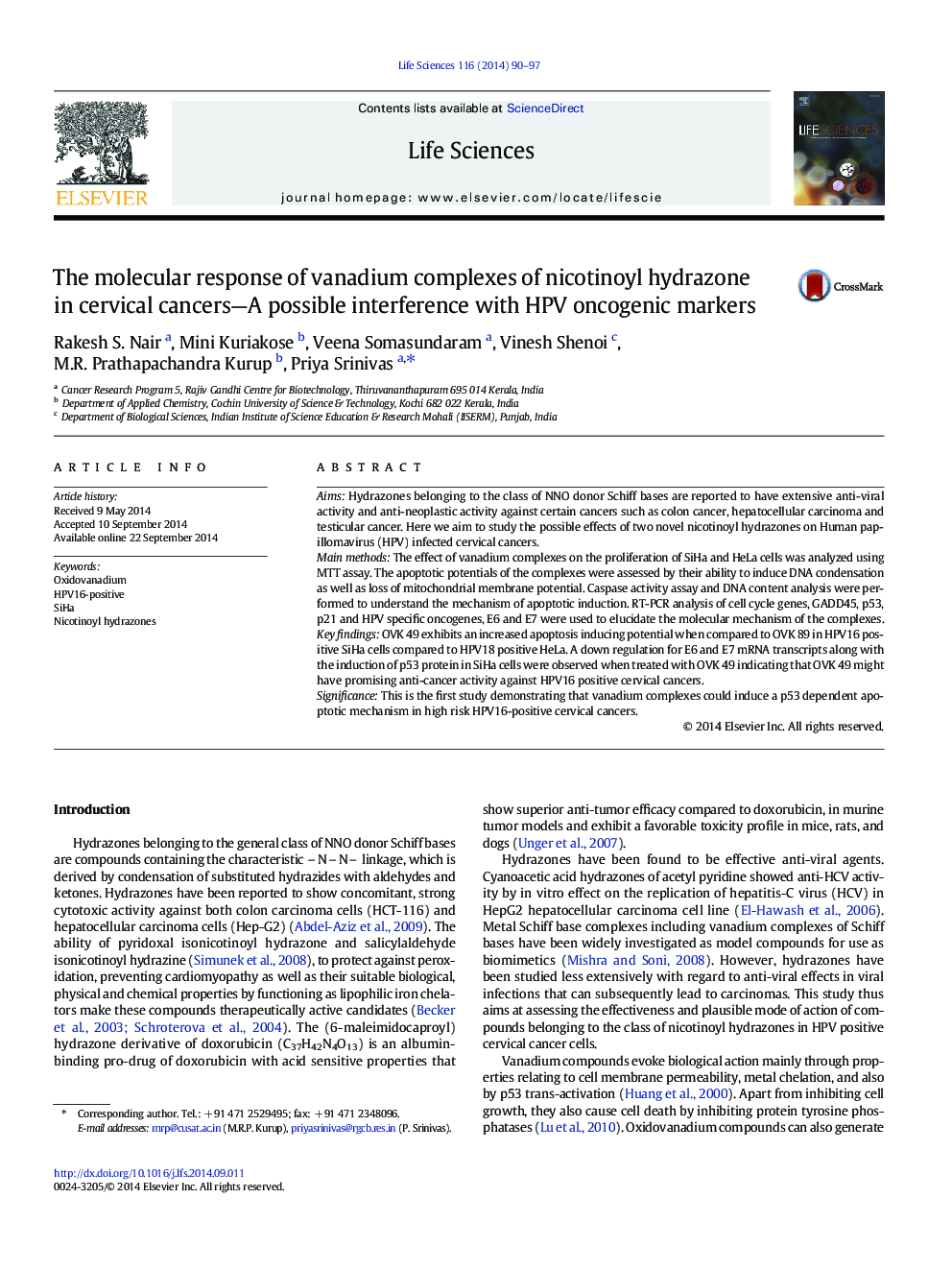| Article ID | Journal | Published Year | Pages | File Type |
|---|---|---|---|---|
| 2551095 | Life Sciences | 2014 | 8 Pages |
AimsHydrazones belonging to the class of NNO donor Schiff bases are reported to have extensive anti-viral activity and anti-neoplastic activity against certain cancers such as colon cancer, hepatocellular carcinoma and testicular cancer. Here we aim to study the possible effects of two novel nicotinoyl hydrazones on Human papillomavirus (HPV) infected cervical cancers.Main methodsThe effect of vanadium complexes on the proliferation of SiHa and HeLa cells was analyzed using MTT assay. The apoptotic potentials of the complexes were assessed by their ability to induce DNA condensation as well as loss of mitochondrial membrane potential. Caspase activity assay and DNA content analysis were performed to understand the mechanism of apoptotic induction. RT-PCR analysis of cell cycle genes, GADD45, p53, p21 and HPV specific oncogenes, E6 and E7 were used to elucidate the molecular mechanism of the complexes.Key findingsOVK 49 exhibits an increased apoptosis inducing potential when compared to OVK 89 in HPV16 positive SiHa cells compared to HPV18 positive HeLa. A down regulation for E6 and E7 mRNA transcripts along with the induction of p53 protein in SiHa cells were observed when treated with OVK 49 indicating that OVK 49 might have promising anti-cancer activity against HPV16 positive cervical cancers.SignificanceThis is the first study demonstrating that vanadium complexes could induce a p53 dependent apoptotic mechanism in high risk HPV16-positive cervical cancers.
